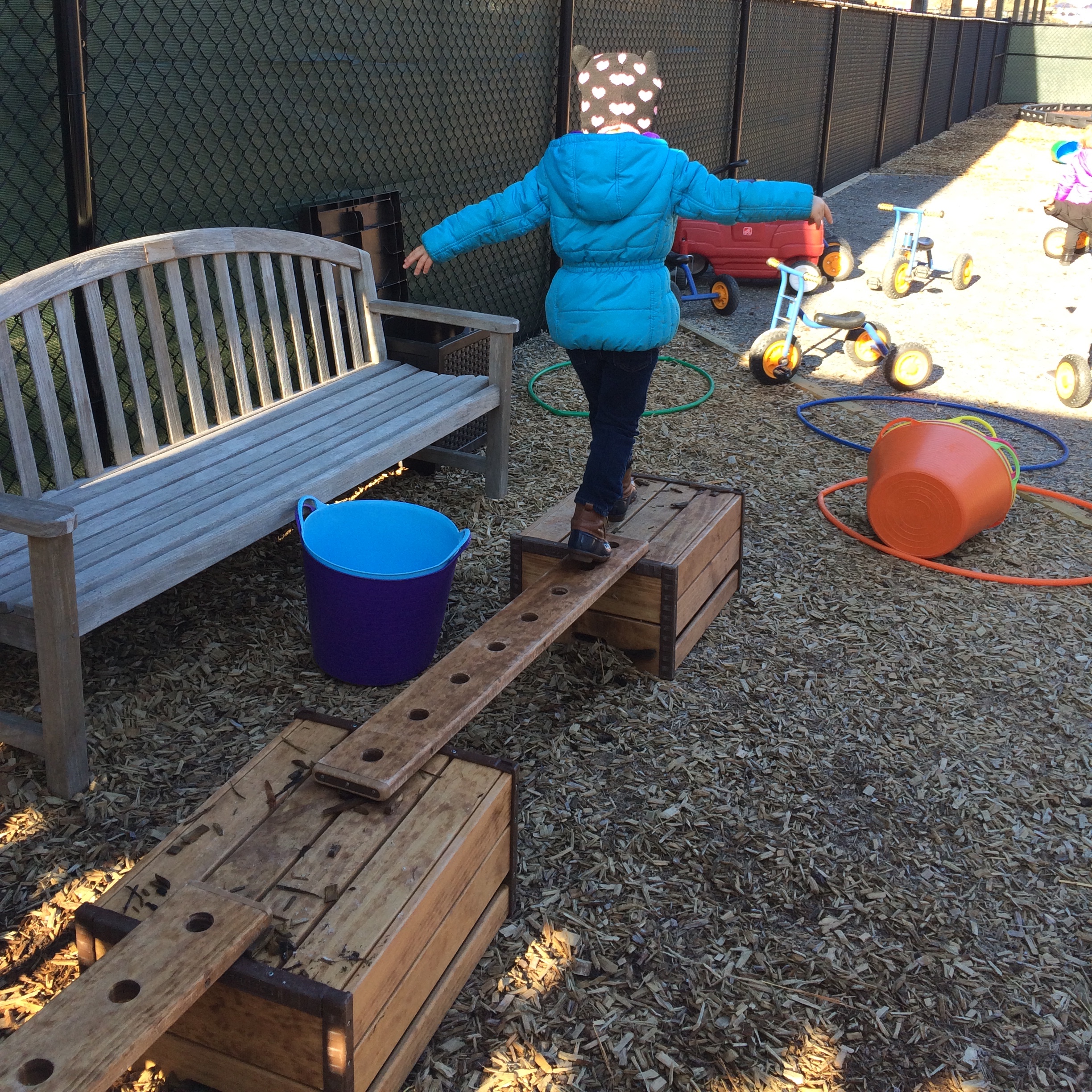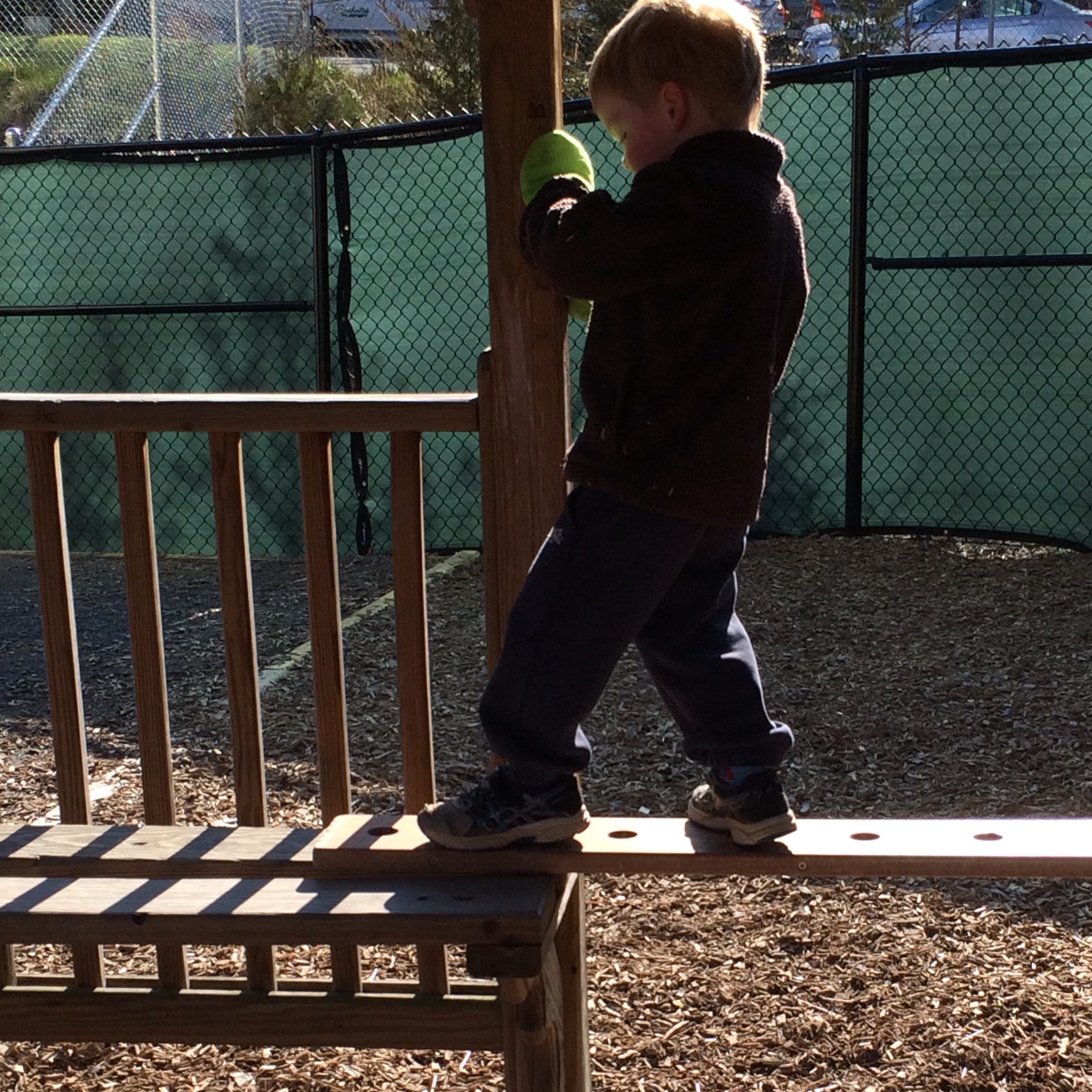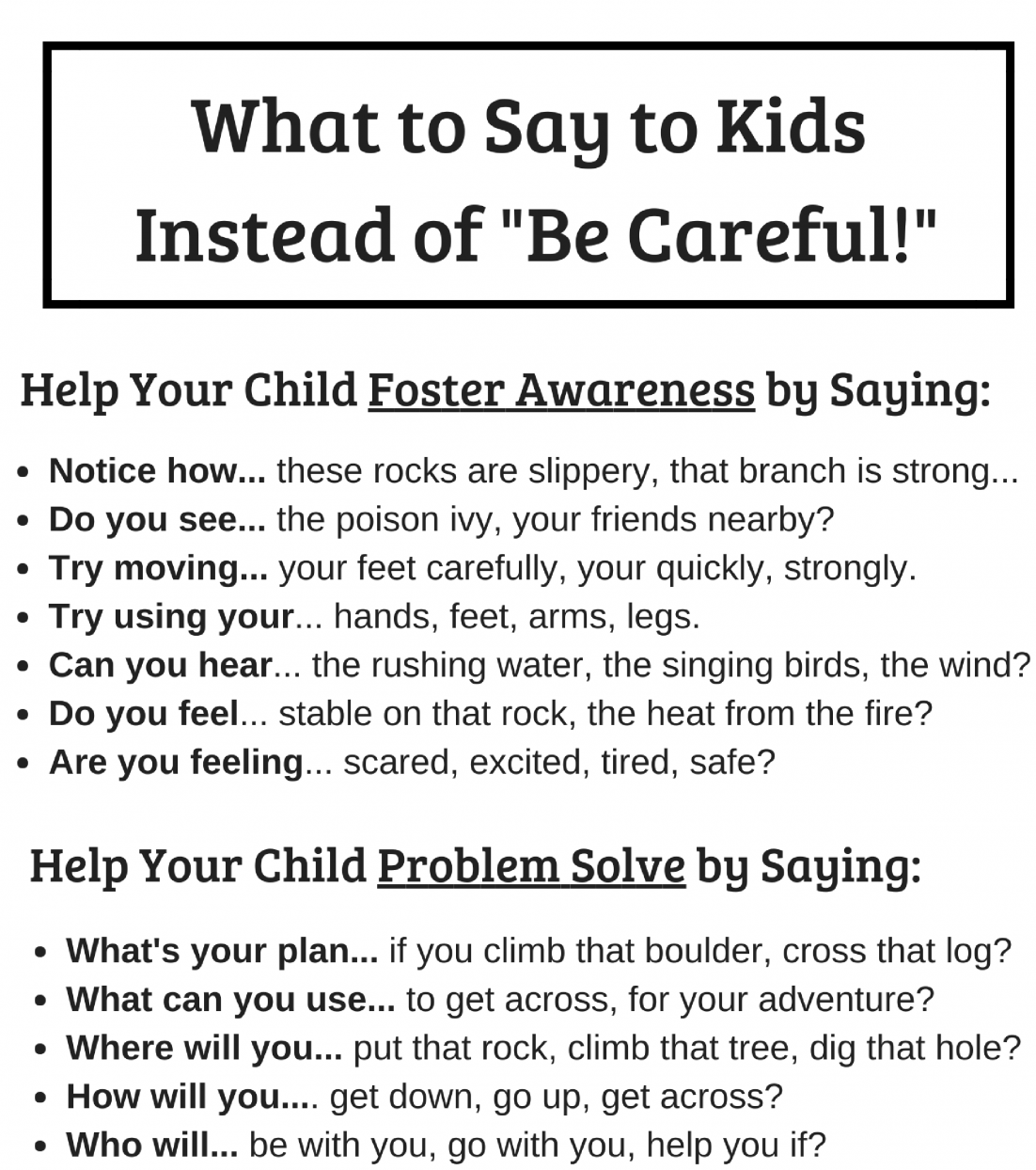Outside on the playground today, the children constructed several balance beams to traverse across.

This activity is a great example of “risky play”, which is defined as thrilling and exciting activity that involves a risk of physical injury, and play that provides opportunities for challenge, testing limits, exploring boundaries and learning about injury risk (Sandseter 2007). Benefits of engaging in risky play in early childhood are immense. Chief among them is that risky play experiences encourage development of cognition and problem-solving skills. Additional benefits include promotion of motivation and self-confidence, as well as motor skills development.
Since the beginning of school in the fall, I have observed the children show interest in the act of balancing. They often try to walk on the raised crossties that line our walkway to the playground, as well as on the ledges of the sidewalk behind the building. The other teachers and I had discussed several times about needing to either buy or build a “balance beam” for outside or in the movement studio for the kids to explore. Those plans, however, had gone on the backburner and never come to fruition. Today, the children figured out a way to build one of their own using our outdoor blocks.
The play first began using wooden storage crates and flat planks across the mulch. After constructing the “bridge”, they took turns crossing it individually. Eventually, a group split off to create a second set of “bridges” on the gazebo benches. These bridges were higher up and attracted a larger group of children to explore. As a group, we figured out a set of rules to keep us safe. These included only one children crossing at a time, waiting our turn, and not touching each other while we were crossing. The children were very much able to assess the risk involved in the activity and come up with solutions to possible danger! Because of their awareness and problem-solving, we did not have any injuries on the bridge.

As one of the supervising adults, I am faced with the same dilemma that I’m sure you have encountered as well- how do I facilitate these developmentally appropriate explorations while still maintaining overall safety? The answer to that is complex, however, there is some guidance that can be found from the research. It is critical for adults to be fully engaged and aware of what is going on, something that we take seriously in how we manage supervision of the children (e.g. providing direct physical proximity, etc.) Additionally, one recommended practice is to encourage children to be intentional in their exploration. Here at the preschool, we use the following set of prompts to support children in these types of activities:

Have a wonderful weekend!
